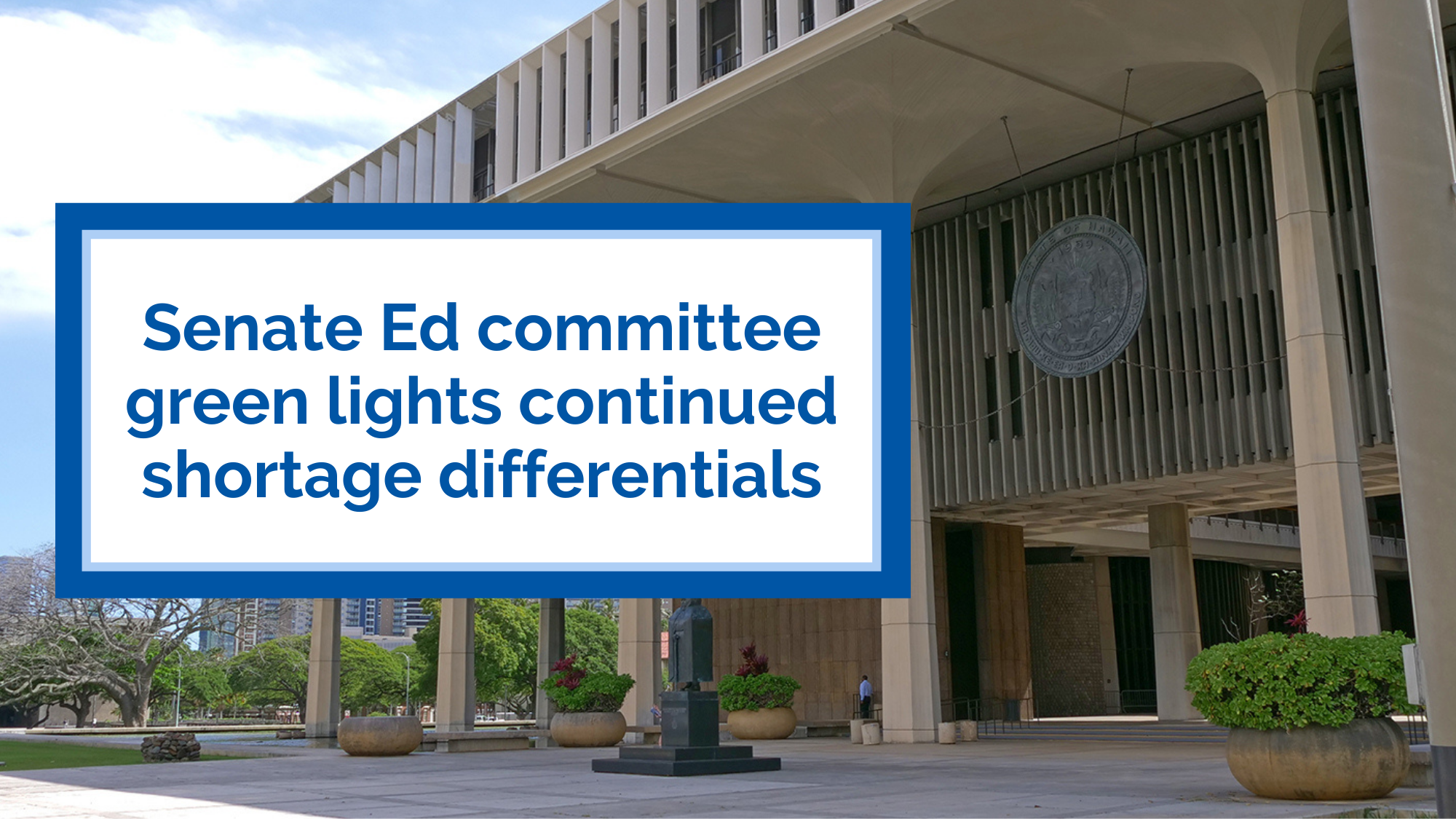New HIDOE data show the differentials decreasing teacher shortages in key areas
Posted: January 28, 2022
The state Senate Education Committee gave its unanimous approval to a bill Friday that would continue funding shortage differential payments to special education and Hawaiian language immersion teachers as well as those who teach in geographically remote and hard-to-staff schools.
The differentials focus on chronic shortage areas, paying special education classroom teachers an extra $10,000, licensed Hawaiian immersion teachers $8,000 annually and teachers in hard-to-staff schools amounts ranging from $3,000 to $8,000 a year. About 4,000 educators across the state have received those payments for the last two years.
A total of 19 of the Senate’s 25 members introduced the differential proposal, SB2820, which would take effect in July if it becomes law.
Hawaii State Teachers Association President Osa Tui, Jr. told the committee Friday that, “Addressing special education, geographically hard-to-fill areas, and Hawaiian immersion takes care of some of our neediest and vulnerable populations of students who have time and again been neglected by the system through no fault of their own. Providing these shortage differentials acknowledges that these students are entitled to highly qualified educators just like their regular education peers, their peers in urban areas, and their peers in non-immersion settings.”
“Recent data has shown how these differentials were effective; these differentials worked as planned!” Tui said in written testimony.
The Senate Education Committee received 144 pieces of written testimony in favor of the proposal, according to Senate Education Chair Michelle Kidani. All five members of the committee voted for the bill Friday, and it will be forwarded to the Senate Ways and Means Committee for further consideration.
In a report on the impact of shortage differentials released earlier this month, interim Superintendent Keith Hayashi told the Board of Education that the differentials “are having a positive impact on increasing the number of licensed/qualified teachers” in special education, hard-to-staff schools and Hawaiian language immersion programs.
In school year 2020-2021, the first full year of the shortage differentials, public schools in the islands saw a 16% increase in the number of licensed special education teachers and a 45% decrease in the number of non-licensed special education teachers. Overall, there was a 43% drop in the number of special education teacher vacancies that year.
Since the hard-to-staff shortage differentials began on Jan. 7, 2020, the department reported an initial 38% decrease in the number of teaching vacations in hard-to-staff geographic areas.
Hayashi told senators Friday the department supports continued funding for the shortage differentials.
After strong advocacy from the HSTA, the Board of Education originally approved the shortage differentials in December 2019 and educators began receiving them the next month, starting in January of 2020.
After the coronavirus pandemic hit and state revenues dropped significantly, former Superintendent Christina Kishimoto tried to end the shortage differentials, but she faced strong opposition from HSTA members, community members and even members of the BOE who served as her bosses.
The BOE twice overruled her and directed her to continue the differentials in 2020 and 2021.
Educators, parents, and community members turned in hundreds of pages of testimony and teachers testified remotely during a special meeting called by the BOE in February 2021 to overturn the superintendent’s memo that would have stopped the payments at the end of the 2020-2021 school year.

